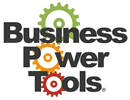This article originally appeared in Harvard Business Review and you can link to it here.
Improving customer experience is often a top business priority, but what about employee experience?
Temkin Group reports a correlation between employee engagement and success in customer experience. In its 2016 Employee Engagement Benchmark Study, the firm showed that companies that excel at customer experience have one-and-a-half times as many engaged employees as customer experience laggards do. Gallup has found that a staggering 87% of employees worldwide are not engaged, but companies with highly engaged workforces outperform their peers by 147% in earnings per share.
I’d argue that companies already know how to improve employee experience: All they have to do is apply to their HR practices the principles of customer experience design that their marketing and operations teams probably already use.
Applying customer experience strategy to employee experience begins with needs-based segmentation, grouping employees into clusters based on their wants and needs. Most companies organize employees in standard groupings like job title, rank, department, business unit, or geography. But just as customer experience design requires a more nuanced understanding of customers than simple demographics or economic value, employee experience design should be based on employees’ drivers and desires.
It isn’t news that employees don’t all want the same development opportunities, rewards, and schedules. They differ in their level of interest in communicating and participating and in the kind of compensation and rewards they value. Companies should be able to provide experiences designed to appeal to these different segments.
Companies can also use a segmentation strategy in times of change. For example, it might be helpful to create groupings of skeptics, observers, participants, and champions. who have distinct needs and can be reached with tailored tactics.
Another tool HR can borrow from customer experience is the journey map, which outlines the steps customers go through in engaging with a company. This approach can be applied to employees through the employment life cycle as well. For example, here are the 10 stages a client of mine identified in their employee journey:
- sourcing and recruiting
- pre-boarding
- onboarding (orientation and initial training)
- compensation and benefits
- ongoing learning and development
- ongoing engagement, communication, and community involvement
- rewards and recognition
- performance planning, feedback, and review
- advancement
- retirement, termination, or resignation
For each stage, we outlined the desired outcomes for the company and for the employee. Working through each stage and employee segment, we identified the gaps between the current experience and an experience that would address employees’ needs, cultivate the desired culture, and align with our business objectives and requirements.
Just as we would in customer experience design, we used research to help us visualize and evaluate the employee journey from employees’ points of view. We also recognized that the employee journey isn’t linear, so we paid special attention to the transitions between stages and identified points in the experience when an employee might get “lost.” Through this process, we were able to pinpoint changes we needed to make in operations, policies and procedures, programs, and even specific touchpoints to provide a seamless, engaging, and valuable employee experience.
The best customer experiences bring the company’s distinctive brand values and attributes to life, and the same is true of employee experiences. Companies should design them to align with the priorities and differentiators of their brands. For example, if a company wants its brand to be known for automation and speed, then the employees’ workplace environment, benefits, performance reviews, and so on should be technology-enabled and fast. If personalization and personal care is what distinguishes a brand, then the employee experience at that company should deliver on those values.
This way, employees experience the benefits of the brand firsthand and are better equipped and motivated to reinforce and interpret them with customers. It also helps to cultivate a distinctive culture in the company, which in turns helps attract and retain employees who fit with the culture and are more likely to thrive in it.
If a company attends to its employee experience with the same level of discipline and intention that it does to its customer experience, the results can be seen across the board. Employees are more satisfied, companies enjoy higher employee retention and other benefits, and customers get better service. The keys to customer experience excellence show companies how to succeed in the employee experience as well.
 Publish your workplace policies with the most comprehensive employee handbook software template on Earth!
Publish your workplace policies with the most comprehensive employee handbook software template on Earth!
Here’s the easy way to create an employee policies & procedures manual to establish your “ground rules” for working at your company and to build a productive culture. We like people and presume that your employees are intelligent, well-intended individuals — it’s important to show them that you respect them as people as well as employees.
Pre-written sample employee policy handbook includes 200+ employee policies & procedures
Eliminates most of the loopholes that competitors’ software do not. We even inserted “please” & “thank you’ in about 150 places! Developed with HR Experts (we are a member of SHRM), attorneys, successful entrepreneurs, and psychologists. This employee policy manual software template provides excellent management training, ensures that employees are treated fairly, and protects you from lawsuits.
Expert comments throughout explain issues and give direction. Includes everything you need to plan, develop & implement your employee policies and produce a comprehensive employee office policy manual.







